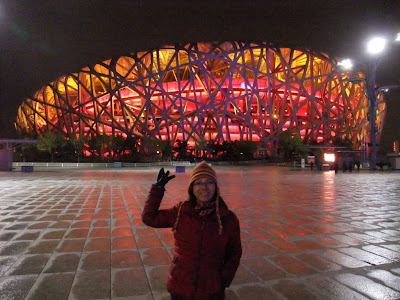

Beijing National Stadium affectionately known as Bird Nest is situated in Olympic Green Village of Chaoyang District in the capital city. It was China's pride during the 2008 Olympic and it lives up to its aspiration as a global landmark.



A natural appearance with steel structure entirely exposed, Bird Nest being the center piece of the most expensive Olympic in the history, is hailed as the most environmentally friendly stadium and the finest arena in the world. The design was accomplished by Swiss and local architects. The Stadium covers an area of 258,000 sq. meter, accommodate 91,000 seats with 200 wheelchair seat for unable.



The Stadium costs more than 400 million US dollars to build and requires about 11,000 a year to maintain after the games. With no regular key tenant, it is opened as a tourist attraction and recreation activities. It now boasts the largest ski resort in urban Beijing.



It was said that the form of the Stadium looks like a big nest embracing and nursing human beings and it also looks like a cradle bearing human's hope of the future.


In Chinese mythology, the sun is represented by a circle and the moon by a square. It fully reflects in the shape of Bird Nest and water cube aquatic center opposite, reinforced when the venues are lit at night, red for bird nest and blue for water cube.



Olympic Aquatics Center is just opposite the Bird Nest Stadium and it has turned into a water park after the games were over.




















Tienanmen Square at night.



Changan Street


Beautiful night in Beijing downtown.


The grand Beijing Hotel.



Wangfu-jing Pedestrian Street and the main gate of The National Opera House.



The National Opera House with moat of water surrounded, changes colors at night.



The Palace.




The largest sky screen in Beijing and the unique CCTV building .



No comments:
Post a Comment